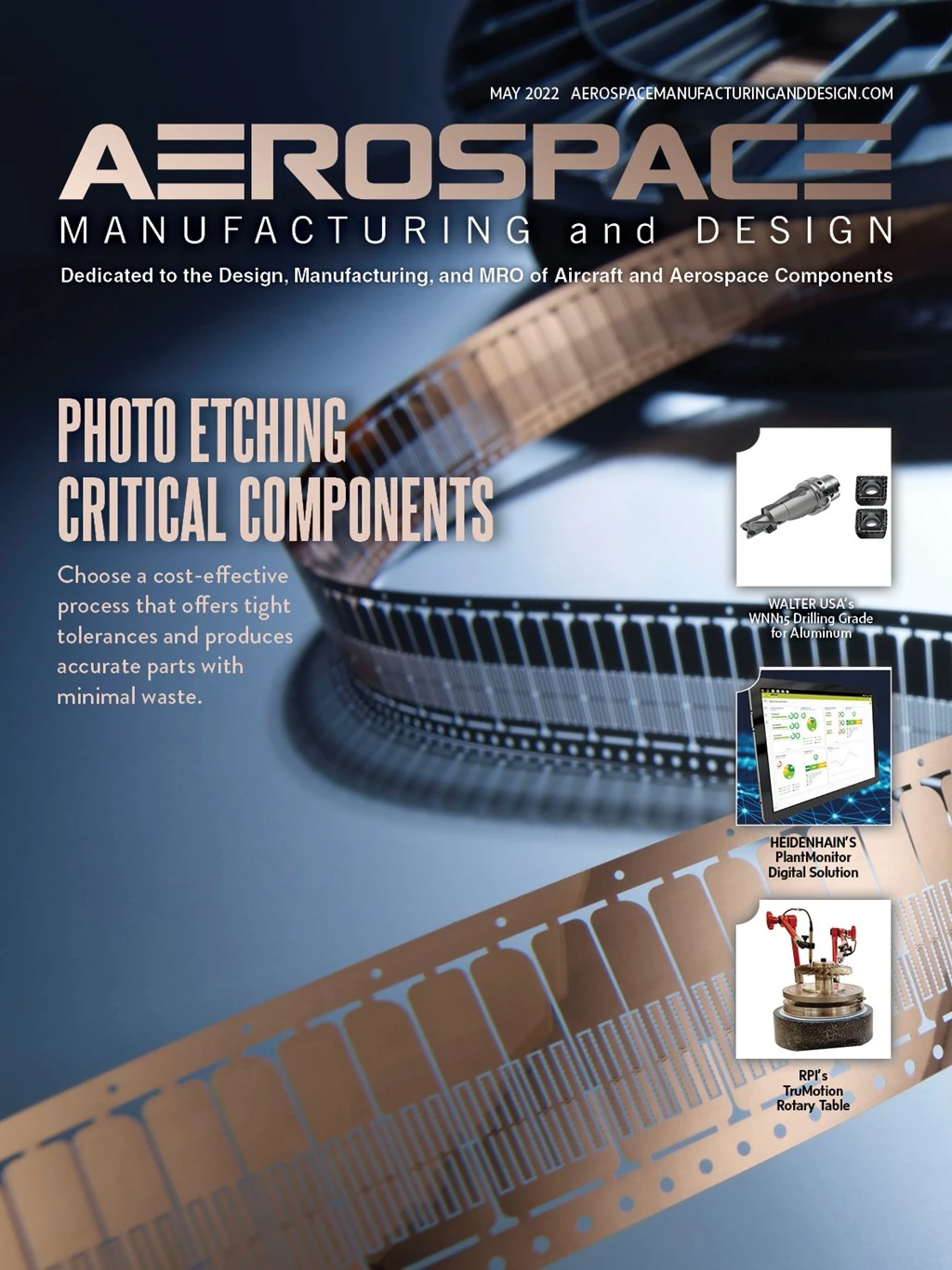
GIE Media

1 What are some common problems when manufacturing blisks?
With aerospace machining picking up again, some companies may be looking to get into the industry for the first time, while experienced shops might be looking for new ways to reduce costs. That means higher throughput, lower cycle time, and ensuring your parts are customer-ready and have flawless surface finishes.
Blisks are inherently challenging because of their geometry. It’s tough to hold tight tolerances on the leading edge, which can be ±0.0005". And your blades can be out more than 4", which makes reducing chatter and vibration even more challenging.
2 What are some effective blisk cutting strategies to reduce cycle time?
Some well-established blisk cutting strategies have been proven during the past 10 to 15 years, such as trochoidal or dynamic tool path cutting that’s well suited for machining hard metals.
Rather than slotting straight down, in trochoidal milling, the cutting tool rotates in a circular pattern along the tool path. This reduces the amount of heat retained in the chip, extending tool life. While trochoidal milling usually results in a longer cycle time, the benefits outweigh any additional time that might be added to a job. You’ll get higher throughput because of longer tool life and repeatability in a roughing operation.
Along with cutting strategies, cutting fluid significantly impacts your machining process. The correct fluid depends on the application; for ferrous and nonferrous materials such as aluminum, Inconel, titanium, or alloys with high nickel content, the right cutting fluid will extend tool life and protect your surface finish.
3 What should I look for in end mills?
For tools and holders, first look for rigidity. The complex geometry and varying thicknesses of the workpiece dictate your tooling choices.
Barrel, ball, and taper end mills are great for blisks and impellers. There’s a lot of swarf cutting in blisk work, so having those tools on hand lets you machine a near-net shape, getting you closer to the finished product faster. Shops that work exclusively in aerospace may even have tools custom-made to perfect a tools’ geometry, rake, hone, and polish.
4 Do you need different CAM software for blisk work?
There are many software tools on the market, and some are better than others for blisk manufacturing. Since blisks can only be efficiently manufactured using a 5-axis machine tool, that’s an excellent place to start narrowing your search. But there are still many options; numerous CAM companies make software specifically for blisk work. Blisks involve intricate tool paths and a lot of complex operations, so the right CAM software will show you the most effective way to manufacture a blisk without putting your setup at risk.
5 What do I need for workholding and how should I start my search for a blisk machine?
High performance, rigidity, and vibration dampening are the top qualities you should look for in workholding. All that adds up and contributes to your machining environment.
In selecting a machine tool, look at the tolerances the machine can hold, and its rigidity.
If your tolerance is too tight, you’ll get a jerky motion because all five axes are moving toward the same point, changing velocity and putting the workpiece and spindle at risk. It’s essential to find a reputable vendor who can help meet your machining goals and solve your application challenges.


Explore the May 2022 Issue
Check out more from this issue and find your next story to read.
Latest from Aerospace Manufacturing and Design
- AAMI project call submission deadline extended to May 12
- Jergens launches cast iron tooling column additions
- Airbus to acquire assets relating to its aircraft production from Spirit AeroSystems
- FANUC America's Cobot and Go web tool
- Chicago Innovation Days 2025: Shaping the future of manufacturing
- High-density DC/DC converters for mission-critical applications
- #59 - Manufacturing Matters: Additive manufacturing trends, innovations
- ACE at 150: A legacy of innovation and industry leadership





